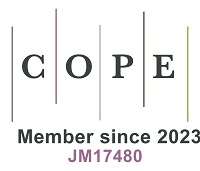REFERENCES
1. UN. Climate ambition alliance: net zero 2050; 2020. Available from: https://climateaction.unfccc.int/Initiatives?id=Climate_Ambition_Alliance%3A_Net_Zero_2050#:~:text=The%20initiative%20aims%20at%20generating,the%20Parties%20to%20the%20UNFCCC [Last accessed on 24 Dec 2024].
2. Policy Speech by the Prime Minister to the 203rd Session of the Diet; 2020. Available from: https://japan.kantei.go.jp/99_suga/statement/202010/_00006.html#:~:text=We%20hereby%20declare%20that%20by,a%20constraint%20on%20economic%20growth [Last accessed on 24 Dec 2024].
3. Hertwich EG, Peters GP. Carbon footprint of nations: a global, trade-linked analysis. Environ Sci Technol 2009;43:6414-20.
4. Ivanova D, Stadler K, Steen-Olsen K, et al. Environmental impact assessment of household consumption. J Ind Ecol 2016;20:526-36.
5. Ivanova D, Vita G, Steen-Olsen K, et al. Mapping the carbon footprint of EU regions. Environ Res Lett 2017;12:054013.
6. Hardadi G, Buchholz A, Pauliuk S. Implications of the distribution of German household environmental footprints across income groups for integrating environmental and social policy design. J Ind Ecol 2021;25:95-113.
7. Sköld B, Baltruszewicz M, Aall C, et al. Household preferences to reduce their greenhouse gas footprint: a comparative study from four European cities. Sustainability 2018;10:4044.
8. Moran D, Wood R, Hertwich E, et al. Quantifying the potential for consumer-oriented policy to reduce European and foreign carbon emissions. Clim Policy 2020;20:S28-38.
9. Ottelin J, Amiri A, Steubing B, Junnila S. Comparative carbon footprint analysis of residents of wooden and non-wooden houses in Finland. Environ Res Lett 2021;16:074006.
10. Shinde R, Froemelt A, Kim A, Hellweg S. A novel machine-learning approach for evaluating rebounds-associated environmental footprint of households and application to cooperative housing. J Environ Manag 2022;304:114205.
11. Koide R, Kojima S, Nansai K, et al. Exploring carbon footprint reduction pathways through urban lifestyle changes: a practical approach applied to Japanese cities. Environ Res Lett 2021;16:084001.
12. Koide R, Lettenmeier M, Akenji L, et al. Lifestyle carbon footprints and changes in lifestyles to limit global warming to 1.5 °C, and ways forward for related research. Sustain Sci 2021;16:2087-99.
13. Zen IS, Al-Amin AQ, Alam MM, Doberstein B. Magnitudes of households’ carbon footprint in Iskandar Malaysia: policy implications for sustainable development. J Clean Prod 2021;315:128042.
14. Pottier A. Expenditure elasticity and income elasticity of GHG emissions: a survey of literature on household carbon footprint. Ecol Econ 2022;192:107251.
15. Zen IS, Uddin MS, Al-Amin AQ, Majid MRB, Almulhim AI, Doberstein B. Socioeconomics determinants of household carbon footprint in Iskandar Malaysia. J Clean Prod 2022;347:131256.
16. Mi Z, Zhang Y, Guan D, et al. Consumption-based emission accounting for Chinese cities. Appl Energy 2016;184:1073-81.
17. Han Y, Duan H, Du X, Jiang L. Chinese household environmental footprint and its response to environmental awareness. Sci Total Environ 2021;782:146725.
18. Lévay PZ, Vanhille J, Goedemé T, Verbist G. The association between the carbon footprint and the socio-economic characteristics of Belgian households. Ecol Econ 2021;186:107065.
19. Feng K, Davis SJ, Sun L, et al. Outsourcing CO2 within China. Proc Natl Acad Sci USA 2013;110:11654-9.
20. Kanemoto K, Shigetomi Y, Hoang NT, Okuoka K, Moran D. Spatial variation in household consumption-based carbon emission inventories for 1200 Japanese cities. Environ Res Lett 2020;15:114053.
21. Shigetomi Y, Kanemoto K, Yamamoto Y, Kondo Y. Quantifying the carbon footprint reduction potential of lifestyle choices in Japan. Environ Res Lett 2021;16:064022.
22. Muñoz P, Zwick S, Mirzabaev A. The impact of urbanization on Austria’s carbon footprint. J Clean Prod 2020;263:121326.
23. Salo M, Savolainen H, Karhinen S, Nissinen A. Drivers of household consumption expenditure and carbon footprints in Finland. J Clean Prod 2021;289:125607.
24. Lee J, Taherzadeh O, Kanemoto K. The scale and drivers of carbon footprints in households, cities and regions across India. Global Environ Chang 2021;66:102205.
25. Kilian L, Owen A, Newing A, Ivanova D. Microdata selection for estimating household consumption-based emissions. Econ Syst Res 2023;35:325-53.
26. Long Y, Yoshida Y, Zeng IY, Xue J, Li Y. Fuel-specific carbon footprint embodied in Japanese household lifestyles. Earth's Future 2021;9:e2021EF002213.
27. Tsuchiya K, Iha K, Murthy A, et al. Decentralization & local food: Japan’s regional ecological footprints indicate localized sustainability strategies. J Clean Prod 2021;292:126043.
28. Long Y, Yoshida Y, Jiang Y, et al. Japanese urban household carbon footprints during early-stage COVID-19 pandemic were consistent with those over the past decade. NPJ Urban Sustain 2023;3:19.
29. Tripathi R, Dhal B, Shahid M, et al. Agricultural GHG emission and calorie intake nexus among different socioeconomic households of rural eastern India. Environ Dev Sustain 2021;23:11563-82.
30. Arrieta EM, Geri M, Coquet JB, Scavuzzo CM, Zapata ME, González AD. Quality and environmental footprints of diets by socio-economic status in Argentina. Sci Total Environ 2021;801:149686.
31. Peng T, Ren L, Ou X. Development and application of life-cycle energy consumption and carbon footprint analysis model for passenger vehicles in China. Energy 2023;282:128412.
32. Zhang H, Xu Y, Lahr ML. The greenhouse gas footprints of China’s food production and consumption (1987-2017). J Environ Manag 2022;301:113934.
33. da Silva JT, Garzillo JMF, Rauber F, et al. Greenhouse gas emissions, water footprint, and ecological footprint of food purchases according to their degree of processing in Brazilian metropolitan areas: a time-series study from 1987 to 2018. Lancet Planet Health 2021;5:e775-85.
34. Richter JL, Lehner M, Elfström A, et al. 1.5° lifestyle changes: exploring consequences for individuals and households. Sustain Prod Consump 2024;50:511-25.
35. Deng Y, Ma M, Zhou N, Ma Z, Yan R, Ma X. China's plug-in hybrid electric vehicle transition: an operational carbon perspective. Energy Convers Manag 2024;320:119011.
36. Mastrucci A, Niamir L, Boza-Kiss B, et al. Modeling low energy demand futures for buildings: current state and research needs. Annu Rev Environ Resour 2023;48:761-92.
37. Ivanova D, Barrett J, Wiedenhofer D, Macura B, Callaghan M, Creutzig F. Quantifying the potential for climate change mitigation of consumption options. Environ Res Lett 2020;15:093001.
38. Cap S, de Koning A, Tukker A, Scherer L. (In)Sufficiency of industrial decarbonization to reduce household carbon footprints to 1.5 °C-compatible levels. Sustain Prod Consump 2024;45:216-27.
39. Liobikienė G, Brizga J. Sustainable consumption in the baltic states: the carbon footprint in the household sector. Sustainability 2022;14:1567.
40. Yuan R, Rodrigues JFD, Wang J, Tukker A, Behrens P. A global overview of developments of urban and rural household GHG footprints from 2005 to 2015. Sci Total Environ 2022;806:150695.
41. Liu X, Zhang L, Hao Y, Yin X, Shi Z. Increasing disparities in the embedded carbon emissions of provincial urban households in China. J Environ Manag 2022;302:113974.
42. Nansai K, Kagawa S, Suh S, Inaba R, Moriguchi Y. Simple indicator to identify the environmental soundness of growth of consumption and technology: “eco-velocity of consumption”. Environ Sci Technol 2007;41:1465-72.
43. FIES. Family income and expenditure survey; 2019. Available from: https://www.stat.go.jp/english/data/kakei/index.html [Last accessed on 24 Dec 2024].
44. MIC. Consumer price index; 2022. Available from: https://www.stat.go.jp/english/data/cpi/index.html [Last accessed on 24 Dec 2024].
45. 3EID. Embodied energy and emission intensity data for Japan using input-output tables national institute for environmental studies; 2015. Available from: https://www.cger.nies.go.jp/publications/report/d031/jpn/datafile/index.htm [Last accessed on 24 Dec 2024].
46. Shiraki H, Sugiyama M, Matsuo Y, et al. The role of renewables in the Japanese power sector: implications from the EMF35 JMIP. Sustain Sci 2021;16:375-92.
47. Ju Y, Sugiyama M, Kato E, Matsuo Y, Oshiro K, Silva Herran D. Industrial decarbonization under Japan’s national mitigation scenarios: a multi-model analysis. Sustain Sci 2021;16:411-27.
48. Long Y, Guan D, Kanemoto K, Gasparatos A. Negligible impacts of early COVID-19 confinement on household carbon footprints in Japan. One Earth 2021;4:553-64.
49. González-García S, Esteve-Llorens X, Moreira MT, Feijoo G. Carbon footprint and nutritional quality of different human dietary choices. Sci Total Environ 2018;644:77-94.
50. Long Y, Huang L, Su J, Yoshida Y, Feng K, Gasparatos A. Mixed diets can meet nutrient requirements with lower carbon footprints. Sci Adv 2024;10:eadh1077.
51. Nakano S, Washizu A. Aiming for better use of convenience food: an analysis based on meal production functions at home. J Health Popul Nutr 2020;39:3.
52. Ita S, Washizu A, Ju Y. Better social infrastructure matters: impacts of perceptional and behavioral smartization on food-related household emissions and wastes. Urban Clim 2024;56:102007.
53. Wilson C, Grubler A, Nemet G, Pachauri S, Pauliuk S, Wiedenhofer D. The “high-with-low” scenario narrative: key themes, cross-cutting linkages, and implications for modelling. Available from: https://pure.iiasa.ac.at/id/eprint/19036/1/WP-23-009.pdf [Last accessed on 24 Dec 2024].
54. Sugiyama M, Wilson C, Wiedenhofer D, et al. High with low: harnessing the power of demand-side solutions for high wellbeing with low energy and material demand. Joule 2024;8:1-6.
55. Hayashi A, Homma T, Akimoto K. The potential contribution of food wastage reductions driven by information technology on reductions of energy consumption and greenhouse gas emissions in Japan. Environ Chall 2022;8:100588.








